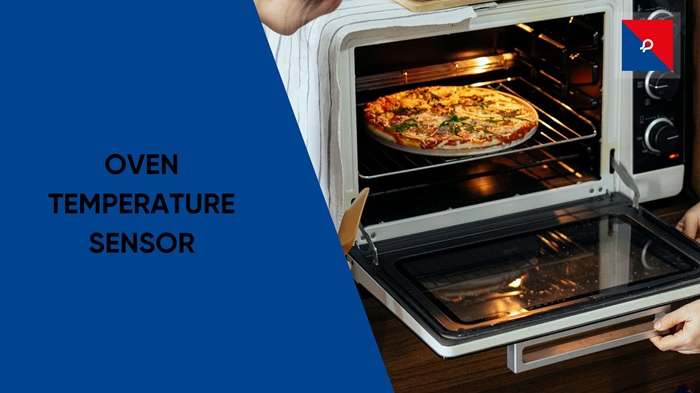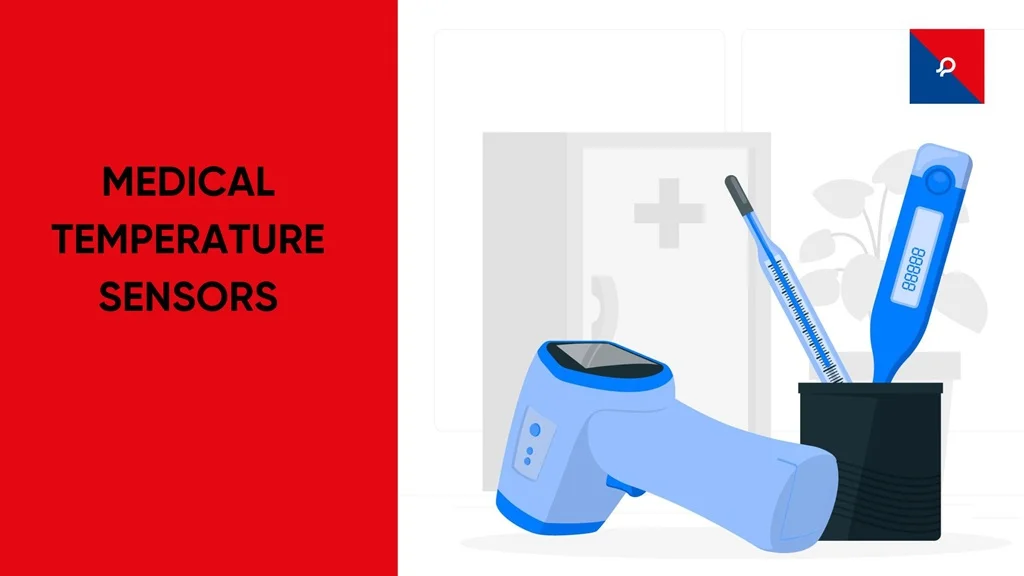
Temperature sensors are crucial in industries like HVAC, automotive, healthcare, and manufacturing. These devices measure temperature and convert it into readable data, enabling precise monitoring and control in various systems. They work through principles such as resistance variation, thermal expansion, and infrared radiation. Common types include thermistors, RTDs, and infrared sensors, each tailored to specific applications. In HVAC systems, they ensure efficient heating, cooling, and system reliability. JR Sensors, a leader in sensor technology, specializes in providing accurate and durable temperature sensors customized for diverse needs, making them a trusted partner for high-quality and reliable temperature monitoring solutions.
How Temperature Sensors Work: Working Principles
Temperature sensors are vital devices used in various industries to detect, measure, and monitor temperature changes. Their operation revolves around converting temperature variations into measurable signals, which can be electrical, mechanical, or digital, depending on the sensor type. These signals are then used to regulate systems or display the temperature. The working principles of temperature sensors are based on fundamental scientific mechanisms, including thermal expansion, resistance variation, voltage generation, and infrared radiation. Here's a detailed explanation of these principles and how they enable temperature sensors to function effectively:
1. Thermal Expansion
Thermal expansion is the principle where materials expand when exposed to heat. This mechanism is commonly utilized in bimetallic strip sensors.
How It Works:
A bimetallic strip consists of two different metals bonded together. These metals have varying coefficients of thermal expansion, meaning they expand at different rates when heated. This difference in expansion causes the strip to bend or curl.
Applications:
The bending motion of the strip is mechanically linked to a pointer or control system to display or regulate the temperature. This method is widely used in basic thermostats and industrial temperature controllers due to its simplicity and reliability.
2. Resistance Variation
Resistance variation is one of the most common principles used in modern temperature sensors. Devices like Resistance Temperature Detectors (RTDs) and thermistors operate on this principle.
- RTDs (Resistance Temperature Detectors):
- RTDs use a material, typically platinum, whose resistance changes linearly with temperature.
- The resistance increases proportionally as the temperature rises, providing high accuracy and stability.
- RTDs are used in critical applications requiring precise temperature readings, such as in laboratories and industrial processes.
- Thermistors:
- Thermistors are another type of resistance-based sensor but operate differently from RTDs.
- They exhibit an exponential change in resistance with temperature.
- Negative Temperature Coefficient (NTC):
- Resistance decreases as temperature rises.
- Positive Temperature Coefficient (PTC):
- Resistance increases as temperature rises.
- Thermistors are smaller, more sensitive, and faster to respond compared to RTDs, making them ideal for applications in HVAC systems, consumer electronics, and automotive temperature monitoring.
3. Voltage Generation
Voltage generation, based on the Seebeck effect, is used in thermocouples, one of the oldest and most versatile types of temperature sensors.
How It Works:
A thermocouple consists of two different metals joined at one end (called the junction). When there’s a temperature difference between this junction and the other end, a voltage is generated.
- The voltage is proportional to the temperature difference, which allows precise temperature measurement.
Applications:
Thermocouples are used in extreme environments, such as industrial furnaces, jet engines, and cryogenics, due to their wide temperature range and durability.
4. Infrared Radiation
Infrared (IR) temperature sensors, often called non-contact sensors, rely on detecting the heat emitted as infrared radiation from an object.
How It Works:
Every object emits infrared radiation proportional to its temperature. Infrared sensors capture this radiation and convert it into electrical signals, which are then processed to calculate the temperature.
Advantages:
- They are ideal for measuring the temperature of moving objects, high-temperature systems, or surfaces that are difficult to reach.
- IR sensors are widely used in industries like steel manufacturing, food processing, and medical diagnostics (e.g., non-contact thermometers).
Integration of JR Sensors
JR Sensors leverages these advanced mechanisms to design temperature sensors that cater to diverse industrial needs. With a focus on precision and durability, their sensors incorporate cutting-edge technology, ensuring reliable performance even in challenging environments. JR Sensors specializes in resistance-based and infrared temperature sensors, offering customizable solutions for HVAC, automotive, and industrial applications. Their commitment to quality makes them a trusted partner for businesses looking for efficient and robust temperature measurement solutions.
The operation of temperature sensors is grounded in fundamental scientific principles that enable them to convert temperature changes into measurable outputs. Whether using mechanical movements in thermal expansion, resistance changes in RTDs and thermistors, voltage generation in thermocouples, or infrared radiation detection, these sensors have revolutionized temperature monitoring across industries. With companies like JR Sensors advancing sensor technology, industries can rely on innovative and precise solutions for their temperature measurement needs.
Types of Temperature Sensors and Their Working
1. Thermistors
- Thermistors are highly sensitive and accurate sensors. They change resistance significantly with temperature variations.
- Used in HVAC systems for air temperature monitoring and in medical devices for patient monitoring.
2. RTDs (Resistance Temperature Detectors)
- RTDs measure temperature based on the linear increase in resistance of materials like platinum.
- Known for their stability and precision, they are used in industrial and laboratory settings.
3. Thermocouples
- Thermocouples measure temperature differences between two junctions of dissimilar metals.
- They are robust and suitable for extreme temperature ranges, often used in manufacturing and automotive industries.
4. Infrared Sensors
- These sensors detect temperature by measuring the infrared radiation emitted by objects.
- Ideal for non-contact temperature measurement in applications like food safety and electrical equipment monitoring.
Advantages of Temperature Sensors
- Accuracy and Precision
Modern temperature sensors provide highly accurate measurements, enabling precise control in critical applications.
- Versatility
From industrial machinery to home appliances, temperature sensors find application in various sectors.
- Energy Efficiency
Sensors help optimize energy usage in systems like HVAC, reducing operational costs and environmental impact.
- Safety Assurance
By monitoring extreme temperatures, sensors prevent equipment failures and potential hazards.
- Ease of Integration
Compact and user-friendly designs allow seamless integration into existing systems.
About JR Sensors
JR Sensors has been a leading innovator in temperature sensor technology, delivering reliable and accurate solutions for diverse industries. Specializing in custom temperature sensors for HVAC systems, JR Sensors combines advanced technology with robust designs to meet specific client requirements.
Their product range includes thermistors, RTDs, and infrared sensors tailored for applications like air temperature monitoring and refrigerant control. With a focus on durability, precision, and energy efficiency, JR Sensors has earned a reputation for providing top-notch temperature sensing solutions.
By leveraging cutting-edge research and development, JR Sensors ensures that their products align with the evolving demands of modern industries, making them a trusted partner for temperature sensing needs.
Conclusion
Temperature sensors are indispensable in modern HVAC systems, ensuring comfort, energy efficiency, and system reliability. From monitoring air and refrigerant temperatures to tracking coil and duct temperatures, these sensors play a crucial role in maintaining optimal operation.
JR Sensors stands out as a leader in temperature sensor technology, offering innovative and reliable solutions tailored for HVAC applications. With their focus on accuracy, durability, and efficiency, JR Sensors remains a trusted name for industries seeking superior temperature sensing capabilities. Whether for residential, commercial, or industrial HVAC systems, JR Sensors provides the perfect balance of technology and reliability.
Frequently Asked Questions
1. What is a temperature sensor, and how does it work?
2. What are the types of temperature sensors?
3. What are the key applications of temperature sensors?
4. How accurate are temperature sensors?

Burnt Biscuits? Blame the Sensor – The Hot Truth About Your Oven’s Temperature Troubles
If your oven’s cooking like it’s got a mind of its own, your temperature sensor might be the silent saboteur. From half-baked casseroles to scorched cookies, we break down how this little sensor works, why it matters, and how to fix it—without losing your cool (or your dinner). A fun, practical guide that’s just as useful as it is digestible.

Hot Stuff: Why Your Engine Can’t Live Without an Exhaust Temperature Sensor
Think exhaust sensors are just another car part? Think again. These tiny guardians track fiery exhaust temps, protect turbos, keep emissions in check—and even help you pass that dreaded test. Dive into the witty, down-to-earth guide on how EGT sensors silently save your engine (and your wallet) every day. Bonus: You’ll sound like a car guru by the end.

Tiny Tech, Big Impact: Inside the World of Medical Temperature Sensors
Discover how medical temperature sensors work, why they're crucial in healthcare, and how health sensors are transforming modern medical diagnostics. From wearable tech to high-precision devices, learn about the different types of temperature sensor medical devices used today.